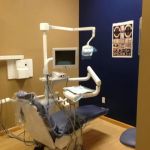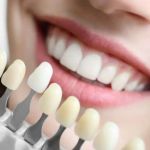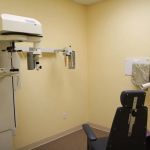How to Fix Crooked Teeth Without Braces
- Why Fix Crooked Teeth?
- Clear Aligners: The Modern Solution
- Veneers for Crooked Teeth
- Natural Methods for Straightening Teeth
- Choosing the Right Option for You
1. Why Fix Crooked Teeth?
Fixing crooked teeth isn't just about enhancing your smile; it can also improve your overall oral health. Crooked teeth can lead to difficulties with chewing, speaking, and even cause jaw pain or headaches. Beyond aesthetics, straightening your teeth can help with cleaning and prevent the buildup of plaque and tartar that might result from hard-to-reach areas.
While braces are the traditional option, many people are now looking for alternatives to straighten their teeth. Fortunately, there are several methods to fix crooked teeth without braces, which is great news for those looking for more discreet or comfortable solutions.
2. Clear Aligners: The Modern Solution
Clear aligners, such as Invisalign, are one of the most popular ways to fix crooked teeth without traditional braces. These transparent, removable trays gently shift your teeth into the desired position over time. They are virtually invisible, making them an ideal choice for adults or teenagers who are self-conscious about wearing braces.
One of the main advantages of clear aligners is that they are removable, meaning you can take them out when eating, drinking, or brushing your teeth. This makes oral hygiene much easier compared to braces, where food particles can easily get stuck. Additionally, clear aligners tend to be more comfortable since they don’t involve brackets and wires that can irritate your gums.
However, it’s important to note that clear aligners may not be suitable for everyone, especially for more complex orthodontic cases. A consultation with your dentist or orthodontist will help determine if they are the right option for you.
3. Veneers for Crooked Teeth
If you're looking for a more immediate solution to crooked teeth, dental veneers could be an option. Veneers are thin, custom-made shells that cover the front surface of your teeth. They can effectively correct the appearance of crooked teeth by reshaping and smoothing out your smile. Unlike aligners, veneers don’t move your teeth; instead, they provide an aesthetic solution that transforms the look of your teeth.
Veneers are a great option if your crooked teeth don’t cause functional issues, and they can be completed in just a few dental appointments. They are particularly effective for those with mild to moderate misalignment. However, veneers do require the removal of a small amount of tooth enamel, and they are not reversible, so careful consideration is needed.
4. Natural Methods for Straightening Teeth
While more drastic methods like clear aligners and veneers are popular, there are also natural methods to help straighten teeth without braces, although these may take longer and offer more subtle results. Some of these methods include:
- Teeth Retainers: Retainers can be used to gradually shift teeth into alignment. They are often worn after braces or aligners but can also be a non-invasive way to adjust teeth.
- Exercises for Teeth: Certain exercises, like using your tongue to push against your teeth in specific ways, might help align teeth over time. However, these methods are still largely debated in terms of their effectiveness.
- Good Oral Hygiene: Maintaining excellent oral hygiene and avoiding bad habits such as nail-biting or thumb-sucking can help prevent further misalignment of teeth.
While these methods are not as fast or effective as orthodontic treatment, they are often a good option for people looking for a more gradual and less invasive approach.
5. Choosing the Right Option for You
When it comes to fixing crooked teeth without braces, the best option will depend on your unique situation. Factors such as the severity of your misalignment, your lifestyle, and your personal preferences will all play a role in the decision-making process.
For those with more severe misalignment, clear aligners or traditional braces might be necessary. However, for mild misalignment, veneers or natural methods could be sufficient. It’s always best to consult with a dental professional to determine which option is the most suitable for you based on your individual needs and goals.







 Leila Zamiri DDS - Cherry Office4.0 (134 review)
Leila Zamiri DDS - Cherry Office4.0 (134 review) Bellevue Dentistry5.0 (150 review)
Bellevue Dentistry5.0 (150 review) Haddon Heights Smiles5.0 (336 review)
Haddon Heights Smiles5.0 (336 review) OMG Worcester Dentistry & Braces4.0 (9 review)
OMG Worcester Dentistry & Braces4.0 (9 review) Promenade Family Dentistry4.0 (12 review)
Promenade Family Dentistry4.0 (12 review) Loma Linda University School of Dentistry3.0 (154 review)
Loma Linda University School of Dentistry3.0 (154 review) The Importance of Oral Health Education During Pregnancy for a Healthy Pregnancy
The Importance of Oral Health Education During Pregnancy for a Healthy Pregnancy Best Tips for Brushing Your Teeth Properly for Healthy Gums: Essential Techniques for Oral Health
Best Tips for Brushing Your Teeth Properly for Healthy Gums: Essential Techniques for Oral Health Why Skipping Dental Checkups Can Lead to Bigger Oral Health Problems
Why Skipping Dental Checkups Can Lead to Bigger Oral Health Problems Advantages of Porcelain Dental Restorations
Advantages of Porcelain Dental Restorations How Can Diabetes Cause Tooth and Gum Problems? Preventing and Managing Oral Health Issues
How Can Diabetes Cause Tooth and Gum Problems? Preventing and Managing Oral Health Issues Healthy Habits for Promoting Good Oral Health and Hygiene: Tips for a Healthy Smile
Healthy Habits for Promoting Good Oral Health and Hygiene: Tips for a Healthy Smile